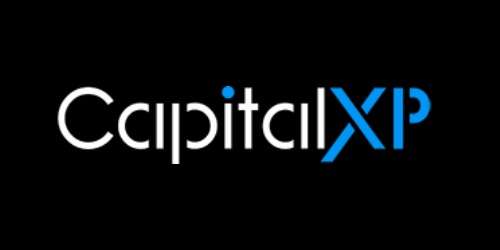Acquiring an existing business represents a significant investment‚ and understanding how to finance the purchase of an existing business is crucial for a successful transaction. Unlike starting from scratch‚ you benefit from established cash flows‚ a recognized brand‚ and an existing customer base. Securing the necessary funding requires careful planning and exploration of various options. The process can seem daunting‚ but with a clear understanding of the available resources and a well-structured financial plan‚ you can navigate the complexities of how to finance the purchase of an existing business effectively.
Exploring Traditional Financing Options
Traditional financing remains a popular route for many aspiring business owners. These options often require a strong credit history‚ a solid business plan‚ and sufficient collateral.
Bank Loans
Bank loans are a common source of funding. They typically offer competitive interest rates and structured repayment terms. However‚ securing a bank loan for a business acquisition can be challenging. Banks will scrutinize the financial health of both the existing business and the borrower. Expect a thorough due diligence process‚ including a review of financial statements‚ tax returns‚ and market analysis.
SBA Loans
The Small Business Administration (SBA) guarantees loans issued by participating lenders. This guarantee reduces the risk for lenders‚ making them more willing to finance business acquisitions. SBA loans often come with favorable terms‚ such as lower down payments and longer repayment periods. The SBA 7(a) loan program is a popular choice for acquiring existing businesses.
Alternative Financing Strategies
Beyond traditional financing‚ several alternative strategies can help you secure the funds needed for a business acquisition.
Seller Financing
Seller financing involves the seller of the business providing a loan to the buyer. This can be an attractive option for both parties. The seller may receive a higher price for the business and earn interest income over time. The buyer can avoid the stringent requirements of traditional lenders and potentially negotiate more favorable terms. It’s crucial to have a well-defined agreement outlining the loan terms‚ repayment schedule‚ and security interests.
Private Equity and Venture Capital
Private equity firms and venture capital investors provide funding in exchange for equity ownership in the business. This option is generally suitable for high-growth potential businesses with strong management teams. Securing private equity or venture capital funding requires a compelling business plan and a proven track record.
Asset-Based Lending
Asset-based lending utilizes the assets of the business being acquired as collateral for the loan. This can include inventory‚ accounts receivable‚ and equipment. Lenders will assess the value of these assets to determine the loan amount. Asset-based lending can be a viable option for businesses with significant tangible assets.
Comparative Table: Financing Options
| Financing Option | Pros | Cons |
|---|---|---|
| Bank Loans | Competitive interest rates‚ structured repayment terms | Stringent requirements‚ extensive due diligence |
| SBA Loans | Lower down payments‚ longer repayment periods | Guaranteed by SBA‚ may require personal guarantees |
| Seller Financing | Flexible terms‚ avoids traditional lender requirements | Seller risk‚ potential for disputes |
| Private Equity | Significant funding‚ access to expertise | Equity dilution‚ loss of control |
| Asset-Based Lending | Utilizes business assets as collateral | Higher interest rates‚ asset valuation required |
Important Considerations
- Due Diligence: Thoroughly investigate the financial health and operational performance of the business before committing to the acquisition.
- Business Plan: Develop a comprehensive business plan outlining your strategy for growth and profitability.
- Professional Advice: Seek guidance from experienced financial advisors‚ attorneys‚ and accountants.
Ultimately‚ understanding all of the available options and conducting thorough due diligence is essential when deciding how to finance the purchase of an existing business. Careful planning and a well-structured financial strategy will significantly increase your chances of a successful acquisition.
But let’s cast aside the spreadsheets and the sober analyses for a moment. Imagine‚ if you will‚ stepping into a time machine‚ not to witness history‚ but to become it. Buying an existing business isn’t just a transaction; it’s inheriting a legacy‚ a story whispered through the walls‚ etched onto the faces of long-serving employees. It’s holding the reins of a chariot already hurtling down the track‚ the wind whipping past your ears as you grapple with the inherent momentum. The financing‚ then‚ becomes the mystical lubricant that allows this temporal leap‚ the enchanted key that unlocks a pre-built kingdom. Forget the cold‚ hard cash; think of it as the exchange of energies‚ a vitalizing elixir that breathes new life into something already vibrant.
The Alchemy of Creative Financing
So‚ you’ve exhausted the conventional avenues. The banks have given you the side-eye‚ the SBA is drowning in paperwork‚ and your wealthy Aunt Mildred suddenly remembers she needs a new yacht. Fear not‚ intrepid entrepreneur! This is where the real fun begins. This is where you become an alchemist‚ transmuting base metal into gold‚ leveraging the very fabric of the universe to achieve your goals.
Bartering for Business
Remember that collection of vintage comic books gathering dust in your attic? Or that pristine classic car you’ve been too afraid to drive? In the modern age‚ bartering isn’t just for peasants trading chickens. Consider offering valuable assets‚ services‚ or even a percentage of future profits in exchange for a portion of the purchase price. Think outside the box. What unique skills or resources do you possess that the seller might find invaluable? Perhaps you’re a marketing guru who can guarantee a significant increase in sales within the first year. Maybe you have connections to a lucrative new market. The key is to identify your strengths and leverage them creatively.
The Crowd’s Funding Fire
Crowdfunding isn’t just for indie filmmakers and quirky gadgets. It can be a powerful tool for acquiring an existing business‚ especially one with a strong local following or a compelling story. Imagine launching a campaign to “Save Our Beloved Bookstore!” or “Revive the Historic Diner!” Tap into the collective passion of the community‚ offering rewards like exclusive discounts‚ personalized merchandise‚ or even naming rights for a signature dish. Not only will you raise capital‚ but you’ll also build a loyal customer base eager to support your endeavor. It’s not just about the money; it’s about creating a movement.
Unlocking Hidden Value: The Art of the Deal
The true magic lies not just in how you finance the purchase‚ but in the art of negotiation itself. Look beyond the surface value; Are there untapped assets within the business that can be leveraged? Perhaps underutilized real estate‚ dormant intellectual property‚ or a neglected customer database brimming with potential. Identifying and exploiting these hidden gems can significantly reduce the overall cost of acquisition.
- The Earn-Out Agreement: Structure the purchase price based on future performance. This allows you to pay a lower upfront cost and share the rewards of growth with the seller.
- Assumable Debt: Take over existing loans with favorable terms. This can save you time and money compared to securing new financing.
- Creative Equity Partnerships: Offer equity in your new venture to key employees or strategic partners. This can provide valuable expertise and motivation‚ while also reducing your upfront capital requirements.
So‚ as you embark on this extraordinary quest‚ remember that how to finance the purchase of an existing business is less about cold‚ calculated finance and more about a thrilling adventure. Embrace the unconventional‚ unleash your creativity‚ and transform the acquisition process into a symphony of ingenuity and opportunity.


